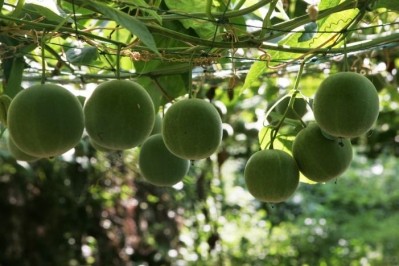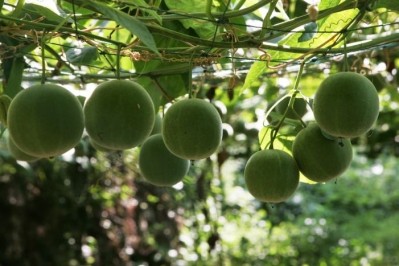Special Edition: Natural sweeteners
Monk fruit launches gain momentum while stevia cools off

Monk fruit is the new kid on the block. It’s the shiny new toy that was just opened under the Christmas tree. It may an indication that not everyone is enamored of stevia right now. Stevia may not have lived up to its promise yet, Tom Vierhile, innovation insights director for market research firm Datamonitor, told FoodNavigator-USA.
Foot is off the stevia gas pedal
Vierhile’s data shows that, in terms of product launches that include stevia, the sweetener’s place atop the pyramid is secure for now but its momentum is definitely slowing. Stevia went from a few dozen launches each year in the 2006-2008 time frame to doubling in 2009 to 163 launches in North America to more than doubling in 2010 with 363 launches.
There was a distinct slowing in 2011, with 269 skus including stevia showing up, and as of Sept. 30 of this year, 177 products including stevia were launched, putting the ingredient on a nominal pace for about 230-240 launches in 2012.
Of the top ten product categories for stevia launches in 2012, seven were various forms of beverages, Vierhile said.
“I think beverages play more to the strength of stevia. Stevia may have issues in something that is heat processed. The fact that it is something that is not used as much in other categories means it has some issues in those applications,” he said.
“I think stevia is a sweetener that needs some extra help; it has some off flavor notes,” Vierhile said.
“Within the ingredients and flavor industry there is almost a cottage industry that exists to do nothing other than to try to optimize the flavor profile of stevia. That tells me it’s a finicky sweetener to work with. That tells me it may take some more finessing than people were prepared for to begin with,” he said.
Monk fruit gains momentum
Monk fruit launches are a fraction of those for stevia at this point in time, but the trend line is much different. As of September 30, 30 skus including monk fruit, sometimes known by its Chinese name luo han guo, have been launched in North America according to Datamonitor’s figures, compared to four such launches in 2011.
The pace of launches this year puts monk fruit on a nominal track to come close to equaling or surpassing the 40 total launches for the ingredient in the 2006-2011 time frame. The data for both sweeteners, Vierhile noted, includes blends.
“Monk fruit is trying to pursue the same type of growth path that stevia took. One of the major categories you see it break out into is tabletop sweeteners,” he said.
“Looking at it by category, beverages are really dominating for monk fruit, too. Functional drinks, coffee, tea.”
Monk fruit, in addition to having a potentially easier flavor profile and flavor dynamics, also has a potentially more appealing story, Vierhile said.
“One of the things that is different about it from stevia is it is coming from a fruit. It may be easier for consumers to buy into the concept; it may have a different halo effect coming from a fruit versus a sweetener that comes from a plant or an herb.
“I think the consumer would take less persuading that a sweetener that comes from a fruit is going to taste like sugar,” he said.
Cautionary tale
While the launch cycle seems to be slowing down for stevia, the alternative sweeteners bubble doesn’t seem about to burst. A comparison to the low carb craze offers some perspective, Vierhile said.
“To me it just doesn’t seem like there is the same frenzy for these new sweeteners as there was for low carb. Low carb was just showing up everywhere. Everybody had a new low carb product in their line, and a lot of the introductions didn’t make very much sense. And a lot of them aren’t around anymore,” he said.
“I think a lot of companies learned expensive lessons from that whole fiasco. Around that time there were companies that were opening whole low carb stores; that probably should have been the first indication that this thing was a fad.”
Some of this faddish enthusiasm morphed over into the gluten-free movement, Vierhile said. It’s clear that the gluten-free sales have spread well beyond the core of consumers who are truly gluten intolerant or have outright celiac disease. But at least in the case of gluten-free, there is a medical diagnosis underpinning the story, Vierhile said.
This sounds a cautionary note for alternative sweeteners. Obesity and its related disorders are a real problem, but low or no cal products using alternative sweeteners aren’t necessarily a medically valid way for dealing with it.
“The thing with metabolic disease is, I think that goes way over the head for most people. I think most people know more about the China Syndrome than they do about metabolic syndrome,” he said.




















